Green Packaging from Consumer and Business Perspectives
Abstract
1. Introduction
2. Materials and Methods
3. Research Activity in Green Packaging
4. Research in Green Packaging from a Consumer Perspective
5. Research in Green Packaging from a Business Perspective
5.1. Design and Materials Used in Green Packaging
5.2. Green Packaging Costs
5.3. Waste Management and the Circular Economy
5.4. Logistics and Supply Chain Management
5.5. Marketing Strategies and Corporate Social Responsibility
6. Discussion and Conclusions
Author Contributions
Funding
Conflicts of Interest
References
- Wong, C.W.; Lai, K.H.; Shang, K.C.; Lu, C.S.; Leung, T.K.P. Green operations and the moderating role of environmental management capability of suppliers on manufacturing firm performance. Int. J. Prod. Econ. 2012, 140, 283–294. [Google Scholar] [CrossRef]
- Pauer, E.; Wohner, B.; Heinrich, V.; Tacker, M. Assessing the environmental sustainability of food packaging: An extended life cycle assessment including packaging-related food losses and waste and circularity assessment. Sustainability 2019, 11, 925. [Google Scholar] [CrossRef]
- Nguyen, A.T.; Parker, L.; Brennan, L.; Lockrey, S. A consumer definition of eco-friendly packaging. J. Clean. Prod. 2020, 252, 119792. [Google Scholar] [CrossRef]
- Wei, W.; Kim, G.; Miao, L.; Behnke, C.; Almanza, B. Consumer inferences of corporate social responsibility (CSR) claims on packaged foods. J. Bus. Res. 2018, 83, 186–201. [Google Scholar] [CrossRef]
- Qing, G.; Guirong, Z. The green packaging management for the logistics enterprises. In Proceedings of the 2012 International Conference on Information Management, Innovation Management and Industrial Engineering, Sanya, China, 20–21 October 2012; Volume 1, pp. 134–137. [Google Scholar]
- Da Cruz, N.F.; Ferreira, S.; Cabral, M.; Simões, P.; Marques, R.C. Packaging waste recycling in Europe: Is the industry paying for it? Waste Manag. 2014, 34, 298–308. [Google Scholar] [CrossRef]
- Nakatani, J.; Maruyama, T.; Moriguchi, Y. Revealing the intersectoral material flow of plastic containers and packaging in Japan. Proc. Natl. Acad. Sci. USA 2020, 117, 19844–19853. [Google Scholar] [CrossRef]
- Sumrin, S.; Gupta, S.; Asaad, Y.; Wang, Y.; Bhattacharya, S. Eco-innovation for environment and waste prevention. J. Bus. Res. 2021, 122, 627–639. [Google Scholar] [CrossRef]
- Walmart Highlights Sustainability Efforts. Available online: https://www.packagingdigest.com/smart-packaging/walmart-highlights-sustainability-efforts (accessed on 30 December 2020).
- Fonseca, L.M.; Domingues, J.P.; Dima, A.M. Mapping the sustainable development goals relationships. Sustainability 2020, 12, 3359. [Google Scholar] [CrossRef]
- de la Caba, K.; Guerrero, P.; Trung, T.S.; Cruz-Romero, M.; Kerry, J.P.; Fluhr, J.; Maurer, M.; Kruijssen, F.; Albalat, A.; Bunting, S.; et al. From seafood waste to active seafood packaging: An emerging opportunity of the circular economy. J. Clean. Prod. 2019, 208, 86–98. [Google Scholar] [CrossRef]
- Zimon, D.; Tyan, J.; Sroufe, R. Implementing Sustainable Supply Chain Management: Reactive, Cooperative, and Dynamic Models. Sustainability 2019, 11, 7227. [Google Scholar] [CrossRef]
- Testa, F.; Iovino, R.; Iraldo, F. The circular economy and consumer behaviour: The mediating role of information seeking in buying circular packaging. Bus. Strategy Environ. 2020, 29, 3435–3448. [Google Scholar] [CrossRef]
- Vila-Lopez, N.; Küster-Boluda, I. A bibliometric analysis on packaging research: Towards sustainable and healthy packages. Br. Food J. 2021. [Google Scholar] [CrossRef]
- Singh, J.; Ordoñez, I. Resource recovery from post-consumer waste: Important lessons for the upcoming circular economy. J. Clean. Prod. 2016, 134, 342–353. [Google Scholar] [CrossRef]
- Baas, J.; Schotten, M.; Plume, A.; Côté, G.; Karimi, R. Scopus as a curated, high-quality bibliometric data source for academic research in quantitative science studies. Quant. Sci. Stud. 2020, 1, 377–386. [Google Scholar] [CrossRef]
- Vanhala, M.; Lu, C.; Peltonen, J.; Sundqvist, S.; Nummenmaa, J.; Järvelin, K. The usage of large data sets in online consumer behaviour: A bibliometric and computational text-mining–driven analysis of previous research. J. Bus. Res. 2020, 106, 46–59. [Google Scholar] [CrossRef]
- Daim, T.U.; Rueda, G.; Martin, H.; Gerdsri, P. Forecasting emerging technologies: Use of bibliometrics and patent analysis. Technol. Forecast. Soc. Chang. 2006, 73, 981–1012. [Google Scholar] [CrossRef]
- Riccardo, P.; Marilia, R.; Paltrinieri, N.; Massaiu, S.; Costantino, F.; Di Gravio, G.; Boring, R.L. Human reliability analysis: Exploring the intellectual structure of a research field. Reliab. Eng. Syst. Saf. 2020, 203, 107102. [Google Scholar]
- Martín-Martín, A.; Orduna-Malea, E.; Thelwall, M.; López-Cózar, E.D. Google Scholar, Web of Science, and Scopus: A systematic comparison of citations in 252 subject categories. J. Informetr. 2018, 12, 1160–1177. [Google Scholar] [CrossRef]
- Montoya, F.G.; Alcayde, A.; Baños, R.; Manzano-Agugliaro, F. A fast method for identifying worldwide scientific collaborations using the Scopus database. Telemat. Inform. 2018, 35, 168–185. [Google Scholar] [CrossRef]
- Bastian, M.; Heymann, S.; Jacomy, M. Gephi: An open source software for exploring and manipulating networks. In Proceedings of the Third International AAAI Conference on Weblogs and Social Media, San Jose, CA, USA, 17–20 May 2009. [Google Scholar]
- Muñoz-Leiva, F.; Viedma-del-Jesús, M.I.; Sánchez-Fernández, J.; López-Herrera, A.G. An application of co-word analysis and bibliometric maps for detecting the most highlighting themes in the consumer behaviour research from a longitudinal perspective. Qual. Quant. 2012, 46, 1077–1095. [Google Scholar] [CrossRef]
- Jacomy, M.; Venturini, T.; Heymann, S.; Bastian, M. ForceAtlas2, a continuous graph layout algorithm for handy network visualization designed for the Gephi software. PLoS ONE 2014, 9, e98679. [Google Scholar] [CrossRef]
- Fortunato, S. Community detection in graphs. Phys. Rep. 2010, 486, 75–174. [Google Scholar] [CrossRef]
- Reihanian, A.; Feizi-Derakhshi, M.R.; Aghdasi, H.S. Community detection in social networks with node attributes based on multi-objective biogeography based optimization. Eng. Appl. Artif. Intell. 2017, 62, 51–67. [Google Scholar] [CrossRef]
- Newman, M.E.; Girvan, M. Finding and evaluating community structure in networks. Phys. Rev. E 2004, 69, 026113. [Google Scholar] [CrossRef]
- Trivedi, R.H.; Patel, J.D.; Acharya, N. Causality analysis of media influence on environmental attitude, intention and behaviors leading to green purchasing. J. Clean. Prod. 2018, 196, 11–22. [Google Scholar] [CrossRef]
- Gosselt, J.F.; van Rompay, T.; Haske, L. Won’t get fooled again: The effects of internal and external CSR ECO-labeling. J. Bus. Ethics 2019, 155, 413–424. [Google Scholar] [CrossRef]
- Kassaye, W.W. Green dilemma. Mark. Intell. Plan. 2001, 19, 444–455. [Google Scholar] [CrossRef]
- Su, D.N.; Duong, T.H.; Dinh, M.T.T.; Nguyen-Phuoc, D.Q.; Johnson, L.W. Behavior towards shopping at retailers practicing sustainable grocery packaging: The influences of intra-personal and retailer-based contextual factors. J. Clean. Prod. 2021, 279, 123683. [Google Scholar] [CrossRef]
- Boesen, S.; Bey, N.; Niero, M. Environmental sustainability of liquid food packaging: Is there a gap between Danish consumers’ perception and learnings from life cycle assessment? J. Clean. Prod. 2019, 210, 1193–1206. [Google Scholar] [CrossRef]
- Stiletto, A.; Giampietri, E.; Trestini, S. Heterogeneity in consumer preferences for ready-to-eat pomegranate: An empirical study in Italy. Br. Food J. 2020, 122, 3869–3884. [Google Scholar] [CrossRef]
- Seo, S.; Ahn, H.K.; Jeong, J.; Moon, J. Consumers’ attitude toward sustainable food products: Ingredients vs. Packaging. Sustainability 2016, 8, 1073. [Google Scholar] [CrossRef]
- Prakash, G.; Choudhary, S.; Kumar, A.; Garza-Reyes, J.A.; Khan, S.A.R.; Panda, T.K. Do altruistic and egoistic values influence consumers’ attitudes and purchase intentions towards eco-friendly packaged products? An empirical investigation. J. Retail. Consum. Serv. 2019, 50, 163–169. [Google Scholar] [CrossRef]
- Herbes, C.; Beuthner, C.; Ramme, I. Consumer attitudes towards biobased packaging–A cross-cultural comparative study. J. Clean. Prod. 2018, 194, 203–218. [Google Scholar] [CrossRef]
- Prakash, G.; Pathak, P. Intention to buy eco-friendly packaged products among young consumers of India: A study on developing nation. J. Clean. Prod. 2017, 141, 385–393. [Google Scholar] [CrossRef]
- Ślusarczyk, B.; Kot, S. Solution for sustainable development: Provisions limiting the consumption of disposable plastic carrier bags in Poland. J. Secur. Sustain. Issues 2018, 7, 449–458. [Google Scholar] [CrossRef]
- Jerzyk, E. Design and communication of ecological content on sustainable packaging in young consumers’ opinions. J. Food Prod. Mark. 2016, 22, 707–716. [Google Scholar] [CrossRef]
- Martinho, G.; Pires, A.; Portela, G.; Fonseca, M. Factors affecting consumers’ choices concerning sustainable packaging during product purchase and recycling. Resour. Conserv. Recycl. 2015, 103, 58–68. [Google Scholar] [CrossRef]
- Sodhi, P.; Singh, R.P. Factors affecting consumers’ attitude towards purchasing green packaged food products: An integrated conceptual framework. Int. J. Bus. Excell. 2017, 13, 521–535. [Google Scholar] [CrossRef]
- Mai, L.-W. Consumers’ willingness to pay for ethical attributes. Mark. Intell. Plan. 2014, 32, 706–721. [Google Scholar] [CrossRef]
- Orzan, G.; Cruceru, A.F.; Bălăceanu, C.T.; Chivu, R.G. Consumers’ behavior concerning sustainable packaging: An exploratory study on Romanian consumers. Sustainability 2018, 10, 1787. [Google Scholar] [CrossRef]
- Hao, Y.; Liu, H.; Chen, H.; Sha, Y.; Ji, H.; Fan, J. What affect consumers’ willingness to pay for green packaging? Evidence from China. Resour. Conserv. Recycl. 2019, 141, 21–29. [Google Scholar] [CrossRef]
- Singh, G.; Pandey, N. The determinants of green packaging that influence buyers’ willingness to pay a price premium. Australas. Mark. J. 2018, 26, 221–230. [Google Scholar] [CrossRef]
- Paz, J. Supermarket and green wave. In Handbook of Engaged Sustainability; Dhiman, S., Marques, J., Eds.; Springer: Cham, Switzerland, 2018; pp. 549–577. [Google Scholar]
- Chaudhary, T.; Chanda, A. Evaluation and measurement of performance, practice and pressure of green supply chain in Indian manufacturing industries. Uncertain Supply Chain Manag. 2015, 3, 363–374. [Google Scholar] [CrossRef]
- Boettcher, C.D. Retailers Drive Sustainable Packaging. Flexo 2007, 32, 62. [Google Scholar]
- Tao, S.; Zhong, Y. Research and development of green packaging structure design. Adv. Sci. Lett. 2012, 10, 225–228. [Google Scholar] [CrossRef]
- Xiong, X.; Ma, Q.; Wu, Z.; Zhang, M. Current situation and key manufacturing considerations of green furniture in China: A review. J. Clean. Prod. 2020, 267, 121957. [Google Scholar] [CrossRef]
- Chuang, S.P.; Yang, C.L. Key success factors when implementing a green-manufacturing system. Prod. Plan. Control 2014, 25, 923–937. [Google Scholar] [CrossRef]
- Moustafa, H.; Youssef, A.M.; Darwish, N.A.; Abou-Kandil, A.I. Eco-friendly polymer composites for green packaging: Future vision and challenges. Compos. Part B Eng. 2019, 172, 16–25. [Google Scholar] [CrossRef]
- Ecer, F. Multi-criteria decision making for green supplier selection using interval type-2 fuzzy AHP: A case study of a home appliance manufacturer. Oper. Res. 2020, 1–35. [Google Scholar] [CrossRef]
- Luke, J. Branding Sustainability: Despite the current hype, meaningful packaging sustainability can only be achieved through understanding of all the factors involved. Can. Packag. 2007, 60, 32. [Google Scholar]
- Elliot, D. Luxury packaging: A touch of class. Packag. News 2010. Available online: http://www.packagingnews.co.uk/design/new-packs/luxury-packaging-a-touch-of-class/ (accessed on 28 January 2021).
- Korhonen, J.; Koskivaara, A.; Toppinen, A. Riding a Trojan horse? Future pathways of the fiber-based packaging industry in the bioeconomy. For. Policy Econ. 2020, 110, 101799. [Google Scholar] [CrossRef]
- Nejati, M.; Rabiei, S.; Jabbour, C.J.C. Envisioning the invisible: Understanding the synergy between green human resource management and green supply chain management in manufacturing firms in Iran in light of the moderating effect of employees’ resistance to change. J. Clean. Prod. 2017, 168, 163–172. [Google Scholar] [CrossRef]
- Higgins, L.M.; Schroeter, C.; Wright, C. Lighting the flame of entrepreneurship among agribusiness students. Int. Food Agribus. Manag. Rev. 2018, 21, 121–132. [Google Scholar] [CrossRef]
- Salwa, H.N.; Sapuan, S.M.; Mastura, M.T.; Zuhri, M.Y.M. Green bio composites for food packaging. Int. J. Recent Technol. Eng. 2019, 8, 450–459. [Google Scholar]
- Olsmats, C.; Dominic, C. Packaging scorecard–a packaging performance evaluation method. Packag. Technol. Sci. Int. J. 2003, 16, 9–14. [Google Scholar] [CrossRef]
- Bucci, D.Z.; Forcellini, F.A. Sustainable packaging design model. In Complex Systems Concurrent Engineering; Loureiro, G., Curran, R., Eds.; Springer: London, UK, 2007; pp. 363–370. [Google Scholar]
- Idrees, M.; Rangari, V.; Jeelani, S. Sustainable packaging waste-derived activated carbon for carbon dioxide capture. J. CO2 Util. 2018, 26, 380–387. [Google Scholar] [CrossRef]
- Nadeem, H.; Naseri, M.; Shanmugam, K.; Dehghani, M.; Browne, C.; Miri, S.; Garnier, G.; Batchelor, W. An energy efficient production of high moisture barrier nanocellulose/carboxymethyl cellulose films via spray-deposition technique. Carbohydr. Polym. 2020, 250, 116911. [Google Scholar] [CrossRef]
- Silveira, V.A.I.; Marim, B.M.; Hipólito, A.; Gonçalves, M.C.; Mali, S.; Kobayashi, R.K.T.; Celligoi, M.A.P.C. Characterization and antimicrobial properties of bioactive packaging films based on polylactic acid-sophorolipid for the control of foodborne pathogens. Food Packag. Shelf Life 2020, 26, 100591. [Google Scholar] [CrossRef]
- Moustafa, H.; Kissi, N.E.; Abou-Kandil, A.I.; Abdel-Aziz, M.S.; Dufresne, A. PLA/PBAT bionanocomposites with antimicrobial natural rosin for green packaging. ACS Appl. Mater. Interfaces 2017, 9, 20132–20141. [Google Scholar] [CrossRef]
- Honarvar, Z.; Hadian, Z.; Mashayekh, M. Nanocomposites in food packaging applications and their risk assessment for health. Electron. Physician 2016, 8, 2531. [Google Scholar] [CrossRef]
- Chen, P.; Han, X.; Li, H. Research on food safety risk based on land policy and green paper packaging innovation. Pap. Asia 2018, 1, 148–152. [Google Scholar]
- Aparicio-Peralta, C.C.; Halabi-Echeverry, A.X.; Puentes-Parodi, A. Sustainable requirements and value proposition for milk Ultra-high temperature (UHT) packaging. Supply Chain Forum Int. J. 2020, 21, 16–25. [Google Scholar] [CrossRef]
- Burek, J.; Kim, D.; Nutter, D.; Selke, S.; Auras, R.; Cashman, S.; Sauer, B.; Thoma, G. Environmental sustainability of fluid milk delivery systems in the United States. J. Ind. Ecol. 2018, 22, 180–195. [Google Scholar] [CrossRef]
- Gatto, M.; Ochi, D.; Yoshida, C.M.P.; da Silva, C.F. Study of chitosan with different degrees of acetylation as cardboard paper coating. Carbohydr. Polym. 2019, 210, 56–63. [Google Scholar] [CrossRef]
- Masilamani, D.; Srinivasan, V.; Ramachandran, R.K.; Gopinath, A.; Madhan, B.; Saravanan, P. Sustainable packaging materials from tannery trimming solid waste: A new paradigm in wealth from waste approaches. J. Clean. Prod. 2017, 164, 885–891. [Google Scholar] [CrossRef]
- Vargas, A.; Silva, B.V.; Rocha, M.R.; Pelisser, F. Precast slabs using recyclable packaging as flooring support elements. J. Clean. Prod. 2014, 66, 92–100. [Google Scholar] [CrossRef]
- Dunleavy, M. Silver is the new green. Recycl. Today 2006, 44, 106–110. [Google Scholar]
- Wang, B.; Sun, D.; Wang, H.M.; Yuan, T.Q.; Sun, R.C. Green and facile preparation of regular lignin nanoparticles with high yield and their natural broad-spectrum sunscreens. ACS Sustain. Chem. Eng. 2018, 7, 2658–2666. [Google Scholar] [CrossRef]
- Saxena, P.; Bissacco, G.; Meinert, K.Æ.; Bedka, F.J. Mold design and fabrication for production of thermoformed paper-based packaging products. J. Manuf. Process. 2020, 58, 311–321. [Google Scholar] [CrossRef]
- Missio, A.L.; Mattos, B.D.; Ferreira, D.D.F.; Magalhães, W.L.; Bertuol, D.A.; Gatto, D.A.; Petutschnigg, A.; Tondi, G. Nanocellulose-tannin films: From trees to sustainable active packaging. J. Clean. Prod. 2018, 184, 143–151. [Google Scholar] [CrossRef]
- Peelman, N.; Ragaert, P.; De Meulenaer, B.; Adons, D.; Peeters, R.; Cardon, L.; Impe, F.V.; Devlieghere, F. Application of bioplastics for food packaging. Trends Food Sci. Technol. 2013, 32, 128–141. [Google Scholar] [CrossRef]
- Leceta, I.; Uranga, J.; Arana, P.; Cabezudo, S.; de la Caba, K.; Guerrero, P. Valorisation of fishery industry wastes to manufacture sustainable packaging films: Modelling moisture-sorption behaviour. J. Clean. Prod. 2015, 91, 36–42. [Google Scholar] [CrossRef]
- Wang, H.; Wang, L. Developing a bio-based packaging film from soya by-products incorporated with valonea tannin. J. Clean. Prod. 2017, 143, 624–633. [Google Scholar] [CrossRef]
- Garrido, T.; Etxabide, A.; Leceta, I.; Cabezudo, S.; de la Caba, K.; Guerrero, P. Valorization of soya by-products for sustainable packaging. J. Clean. Prod. 2014, 64, 228–233. [Google Scholar] [CrossRef]
- Dixit, S.; Yadav, V.L. Comparative study of polystyrene/chemically modified wheat straw composite for green packaging application. Polym. Bull. 2020, 77, 1307–1326. [Google Scholar] [CrossRef]
- Menges, M.S. Recycled Roll Coverings. Pap. Film Foil Convert. 2010, 84, 30. [Google Scholar]
- Vartiainen, J.; Vähä-Nissi, M.; Harlin, A. Biopolymer films and coatings in packaging applications—A review of recent developments. Mater. Sci. Appl. 2014, 5, 48968. [Google Scholar] [CrossRef]
- Baranitharan, P.; Mahesh, G. Alkali treated maize fibers reinforced with epoxy poly matrix composites. Int. J. Sci. Mod. Eng. 2014, 2, 1–7. [Google Scholar]
- Converter/Copacker Embraces Sustainability. Available online: https://www.packagingdigest.com/smart-packaging/convertercopacker-embraces-sustainability (accessed on 30 December 2020).
- Dixit, S.; Yadav, V.L. Optimization of polyethylene/polypropylene/alkali modified wheat straw composites for packaging application using RSM. J. Clean. Prod. 2019, 240, 118228. [Google Scholar] [CrossRef]
- Zhang, G.; Zhao, Z. Green packaging management of logistics enterprises. Phys. Procedia 2012, 24, 900–905. [Google Scholar] [CrossRef]
- Sharma, C.; Bhardwaj, N.K.; Pathak, P. Static intermittent fed-batch production of bacterial nanocellulose from black tea and its modification using chitosan to develop antibacterial green packaging material. J. Clean. Prod. 2021, 279, 123608. [Google Scholar] [CrossRef]
- Ahmed, J.; Varshney, S.K. Polylactides—Chemistry, properties and green packaging technology: A review. Int. J. Food Prop. 2011, 14, 37–58. [Google Scholar] [CrossRef]
- Singh, G.; Pandey, N. Revisiting green packaging from a cost perspective. Benchmarking Int. J. 2019, 26, 1080–1104. [Google Scholar] [CrossRef]
- Gustavo, J.U., Jr.; Pereira, G.M.; Bond, A.J.; Viegas, C.V.; Borchardt, M. Drivers, opportunities and barriers for a retailer in the pursuit of more sustainable packaging redesign. J. Clean. Prod. 2018, 187, 18–28. [Google Scholar] [CrossRef]
- Regattieri, A.; Santarelli, G.; Gamberi, M.; Mora, C. A new paradigm for packaging design in web-based commerce. Int. J. Eng. Bus. Manag. 2014, 6, 6–14. [Google Scholar]
- Pires, A.; Martinho, G.; Ribeiro, R.; Mota, M.; Teixeira, L. Extended producer responsibility: A differential fee model for promoting sustainable packaging. J. Clean. Prod. 2015, 108, 343–353. [Google Scholar] [CrossRef]
- Yıldız-Geyhan, E.; Yılan, G.; Altun-Çiftçioğlu, G.A.; Kadırgan, M.A.N. Environmental and social life cycle sustainability assessment of different packaging waste collection systems. Resour. Conserv. Recycl. 2019, 143, 119–132. [Google Scholar] [CrossRef]
- Zeng, T.; Durif, F. The impact of eco-design packaging on food waste avoidance: A conceptual framework. J. Promot. Manag. 2020, 26, 768–790. [Google Scholar] [CrossRef]
- Joensuu, T.; Edelman, H.; Saari, A. Circular economy practices in the built environment. J. Clean. Prod. 2020, 276, 124215. [Google Scholar] [CrossRef]
- Ruiz-Peñalver, S.M.; Rodríguez, M.; Camacho, J.A. A waste generation input output analysis: The case of Spain. J. Clean. Prod. 2019, 210, 1475–1482. [Google Scholar] [CrossRef]
- Clark, N.; Trimingham, R.; Storer, I. Understanding the views of the UK food packaging supply chain in order to support a move to circular economy systems. Packag. Technol. Sci. 2019, 32, 577–591. [Google Scholar] [CrossRef]
- Sarc, R.; Curtis, A.; Kandlbauer, L.; Khodier, K.; Lorber, K.E.; Pomberger, R. Digitalisation and intelligent robotics in value chain of circular economy oriented waste management–A review. Waste Manag. 2019, 95, 476–492. [Google Scholar] [CrossRef]
- Li, R.; He, M.; He, H.; Deng, Q. Heuristic column generation for designing an express circular packaging distribution network. Oper. Res. 2020, 1–24. [Google Scholar] [CrossRef]
- García-Arca, J.; González-Portela, A.T.; Prado-Prado, J.C. Organizational best practices in packaging design. An analysis in perfumery and cleaning products. Dir. Organ. 2019, 68, 5–19. [Google Scholar]
- Lai, K.H.; Cheng, T.C.E.; Tang, A.K. Green retailing: Factors for success. Calif. Manag. Rev. 2010, 52, 6–31. [Google Scholar] [CrossRef]
- Meherishi, L.; Narayana, S.A.; Ranjani, K.S. Sustainable packaging for supply chain management in the circular economy: A review. J. Clean. Prod. 2019, 237, 117582. [Google Scholar] [CrossRef]
- Gupta, A.; Singh, R.K. Developing a framework for evaluating sustainability index for logistics service providers: Graph theory matrix approach. Int. J. Product. Perform. Manag. 2020, 69, 1627–1646. [Google Scholar] [CrossRef]
- Liu, Y.; Song, B.; Ni, X. The logistics information system based on supply chain for machine tool. In Proceedings of the 2010 International Conference of Logistics Engineering and Management, Chengdu, China, 8–10 October 2010; Volume 387, pp. 2440–2445. [Google Scholar]
- Shi, J.; Shi, X.; Li, D.; Du, Q. Risk evaluation for sustainable packaging logistics solution: A quantitative method and case study. In Proceedings of the Third International Conference on Transportation, Information and Safety, Wuhan, China, 25–28 June 2015; pp. 720–728. [Google Scholar]
- García-Arca, J.; González-Portela, A.T.; Prado-Prado, J.C. ‘Sustainable packaging logistics’. The link between sustainability and competitiveness in supply chains. Sustainability 2017, 9, 1098. [Google Scholar] [CrossRef]
- García-Arca, J.; Prado-Prado, J.C.; González-Portela, A.T. “Packaging logistics”: Promoting sustainable efficiency in supply chains. Int. J. Phys. Distrib. Logist. Manag. 2014, 44, 325–346. [Google Scholar] [CrossRef]
- Tavares, A.C.S.; Vanalle, R.M.; Camarotto, J.A. Influence of green initiatives on environmental, economic and operational outcomes: The case of the Brazilian packaging supply chain. Sustainability 2019, 11, 430. [Google Scholar] [CrossRef]
- Singhry, H.B. An extended model of sustainable development from sustainable sourcing to sustainable reverse logistics: A supply chain perspective. Int. J. Supply Chain Manag. 2015, 4, 115–125. [Google Scholar]
- Kaur, J.; Sidhu, R.; Awasthi, A.; Srivastava, S.K. A Pareto investigation on critical barriers in green supply chain management. Int. J. Manag. Sci. Eng. Manag. 2019, 14, 113–123. [Google Scholar] [CrossRef]
- Molina-Besch, K.; Pålsson, H. A supply chain perspective on green packaging development-theory versus practice. Packag. Technol. Sci. 2016, 29, 45–63. [Google Scholar] [CrossRef]
- Zailani, S.; Jeyaraman, K.; Vengadasan, G.; Premkumar, R. Sustainable supply chain management (SSCM) in Malaysia: A survey. Int. J. Prod. Econ. 2012, 140, 330–340. [Google Scholar] [CrossRef]
- Rukmayadi, D.; Haris, U.M.; Yani, M. Rubber agro-industry green logistic conceptual model. Int. J. Supply Chain Manag. 2016, 5, 192–204. [Google Scholar]
- Xie, Y.; Breen, L. Greening community pharmaceutical supply chain in UK: A cross boundary approach. Supply Chain Manag. Int. J. 2012, 17, 40–53. [Google Scholar] [CrossRef]
- White, G.R.; Wang, X.; Li, D. Inter-organisational green packaging design: A case study of influencing factors and constraints in the automotive supply chain. Int. J. Prod. Res. 2015, 53, 6551–6566. [Google Scholar] [CrossRef]
- Lahane, S.; Kant, R.; Shankar, R. Circular Supply Chain Management: A State-of-art review and future opportunities. J. Clean. Prod. 2020, 258, 120859. [Google Scholar] [CrossRef]
- Çankaya, S.Y.; Sezen, B. Effects of green supply chain management practices on sustainability performance. J. Manuf. Technol. Manag. 2019, 30, 98–121. [Google Scholar] [CrossRef]
- Farooque, M.; Zhang, A.; Thürer, M.; Qu, T.; Huisingh, D. Circular supply chain management: A definition and structured literature review. J. Clean. Prod. 2019, 228, 882–900. [Google Scholar] [CrossRef]
- Ahmed, M.; Thaheem, M.J.; Maqsoom, A. Barriers and opportunities to greening the construction supply chain management. Benchmarking Int. J. 2019, 27, 1211–1237. [Google Scholar] [CrossRef]
- Yu, J.; Gan, M.; Ni, S.; Chen, D. Multi-objective models and real case study for dual-channel FAP supply chain network design with fuzzy information. J. Intell. Manuf. 2018, 29, 389–403. [Google Scholar] [CrossRef]
- Molina-Besch, K.; Pålsson, H. A simplified environmental evaluation tool for food packaging to support decision-making in packaging development. Packag. Technol. Sci. 2020, 33, 141–157. [Google Scholar] [CrossRef]
- De Koeijer, B.; De Lange, J.; Wever, R. Desired, perceived, and achieved sustainability: Trade-offs in strategic and operational packaging development. Sustainability 2017, 9, 1923. [Google Scholar] [CrossRef]
- Juwaheer, T.D.; Pudaruth, S.; Noyaux, M.M.E. Analysing the impact of green marketing strategies on consumer purchasing patterns in Mauritius. World J. Entrep. Manag. Sustain. Dev. 2012, 8, 36–59. [Google Scholar] [CrossRef]
- Kardos, M.; Gabor, M.R.; Cristache, N. Green marketing’s roles in sustainability and ecopreneurship. Case study: Green packaging’s impact on Romanian young consumers’ environmental responsibility. Sustainability 2019, 11, 873. [Google Scholar] [CrossRef]
- Dangelico, R.M.; Vocalelli, D. “Green Marketing”: An analysis of definitions, strategy steps, and tools through a systematic review of the literature. J. Clean. Prod. 2017, 165, 1263–1279. [Google Scholar] [CrossRef]
- Jiménez-Guerrero, J.F.; Gázquez-Abad, J.C.; Ceballos-Santamaría, G. Innovation in eco-packaging in private labels. Innovation 2015, 17, 81–90. [Google Scholar] [CrossRef]
- Maziriri, E.T. Green packaging and green advertising as precursors of competitive advantage and business performance among manufacturing small and medium enterprises in South Africa. Cogent Bus. Manag. 2020, 7, 1719586. [Google Scholar] [CrossRef]
- Smith, K.T.; Brower, T.R. Longitudinal study of green marketing strategies that influence Millennials. J. Strateg. Mark. 2012, 20, 535–551. [Google Scholar] [CrossRef]
- Drexler, D.; Souček, M. The influence of sweet positioning on shelves on consumer perception. Food Packag. Shelf Life 2016, 10, 34–45. [Google Scholar] [CrossRef]
- Nilashi, M.; Yadegaridehkordi, E.; Samad, S.; Mardani, A.; Ahani, A.; Aljojo, N.; Razali, N.S.; Tajuddin, T. Decision to adopt neuromarketing techniques for sustainable product marketing: A fuzzy decision-making approach. Symmetry 2020, 12, 305. [Google Scholar] [CrossRef]
- Wei, A.P.; Peng, C.L.; Huang, H.C.; Yeh, S.P. Effects of Corporate Social Responsibility on Firm Performance: Does Customer Satisfaction Matter? Sustainability 2020, 12, 7545. [Google Scholar] [CrossRef]
- Magnier, L.; Crié, D. Communicating packaging eco-friendliness. Int. J. Retail Distrib. Manag. 2015, 43, 350. [Google Scholar] [CrossRef]
- Zhang, R.; Li, J.; Huang, Z.; Liu, B. Return strategies and online product customization in a dual-channel supply chain. Sustainability 2019, 11, 3482. [Google Scholar] [CrossRef]
- Lysenko-Ryba, K.; Zimon, D. Customer Behavioral Reactions to Negative Experiences during the Product Return. Sustainability 2021, 13, 448. [Google Scholar] [CrossRef]
- Ciliberti, F.; Pontrandolfo, P.; Scozzi, B. Logistics social responsibility: Standard adoption and practices in Italian companies. Int. J. Prod. Econ. 2008, 113, 88–106. [Google Scholar] [CrossRef]
- Casado-Aranda, L.-A.; Sánchez-Fernández, J.; Viedma-del-Jesús, M.I. Analysis of the scientific production of the effect of COVID-19 on the environment: A bibliometric study. Environ. Res. 2020, 193, 110416. [Google Scholar] [CrossRef]
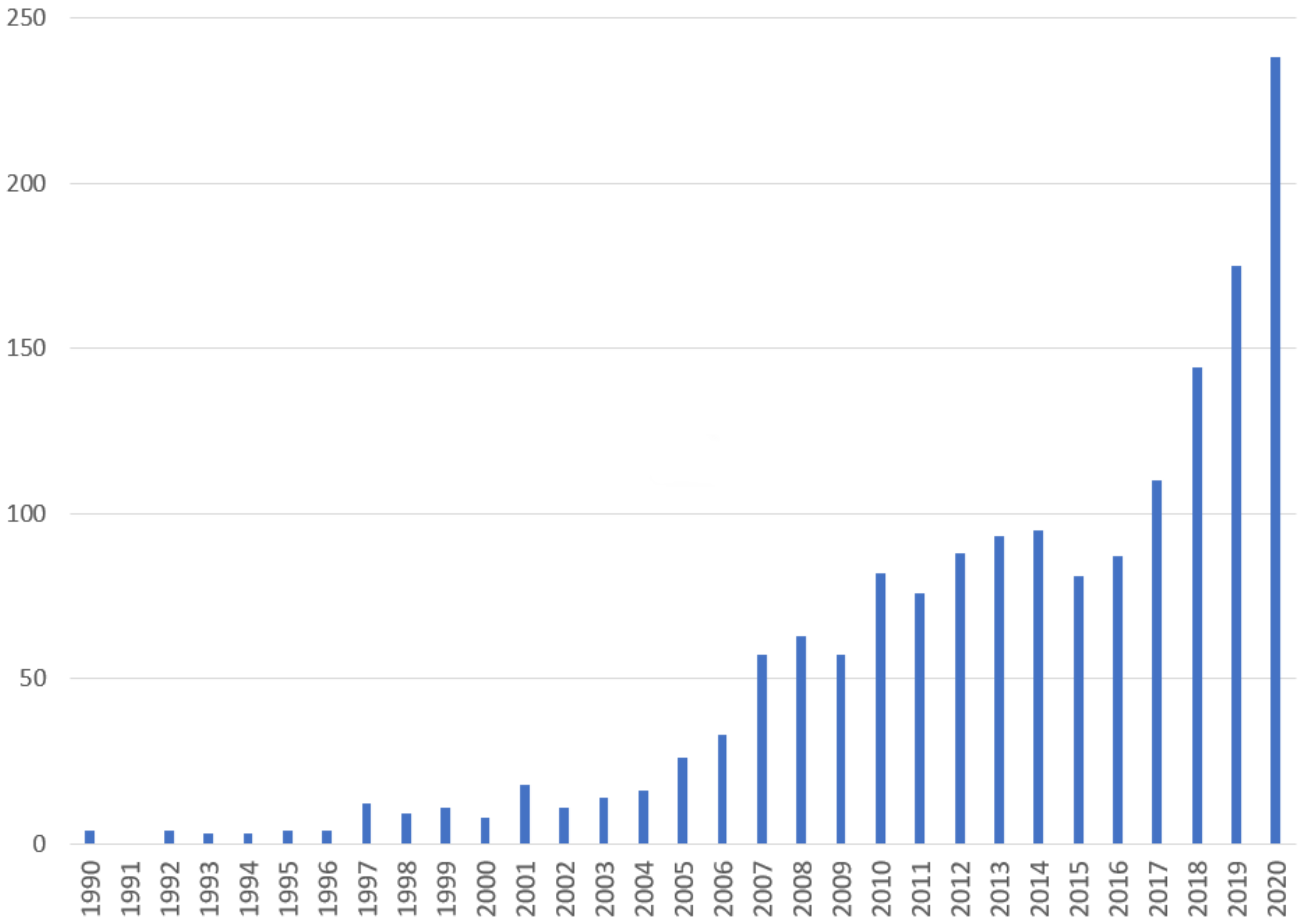
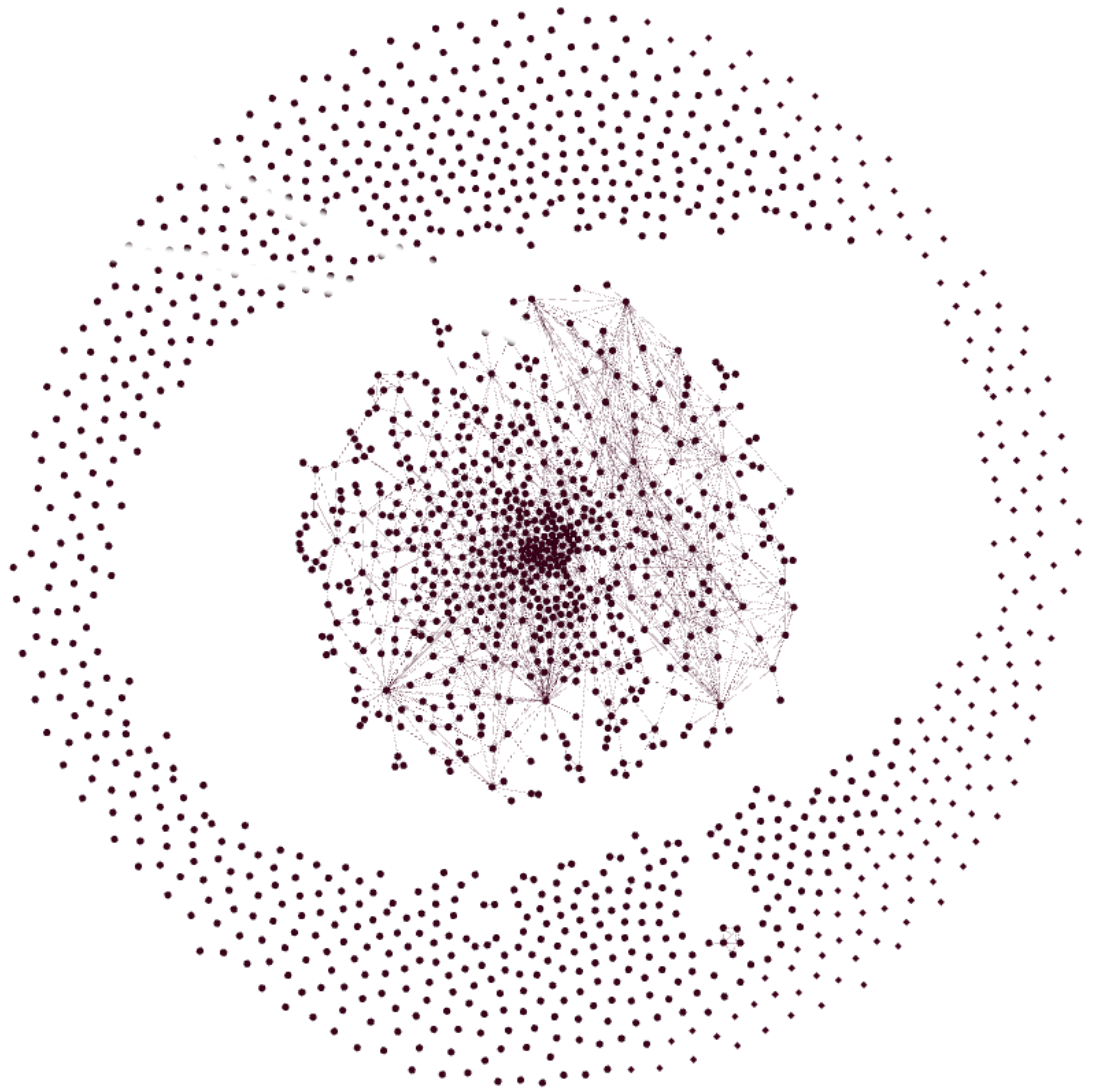
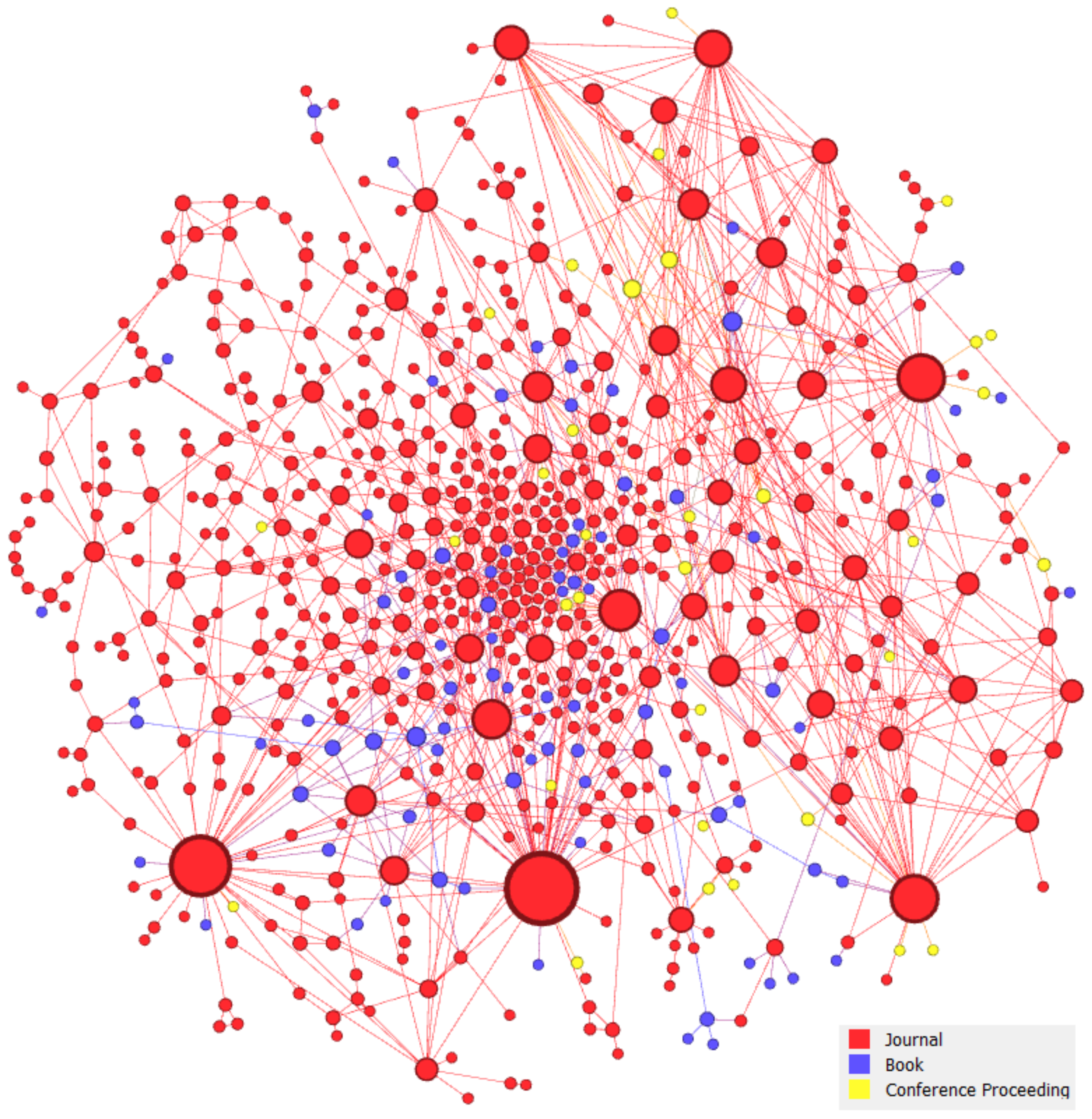
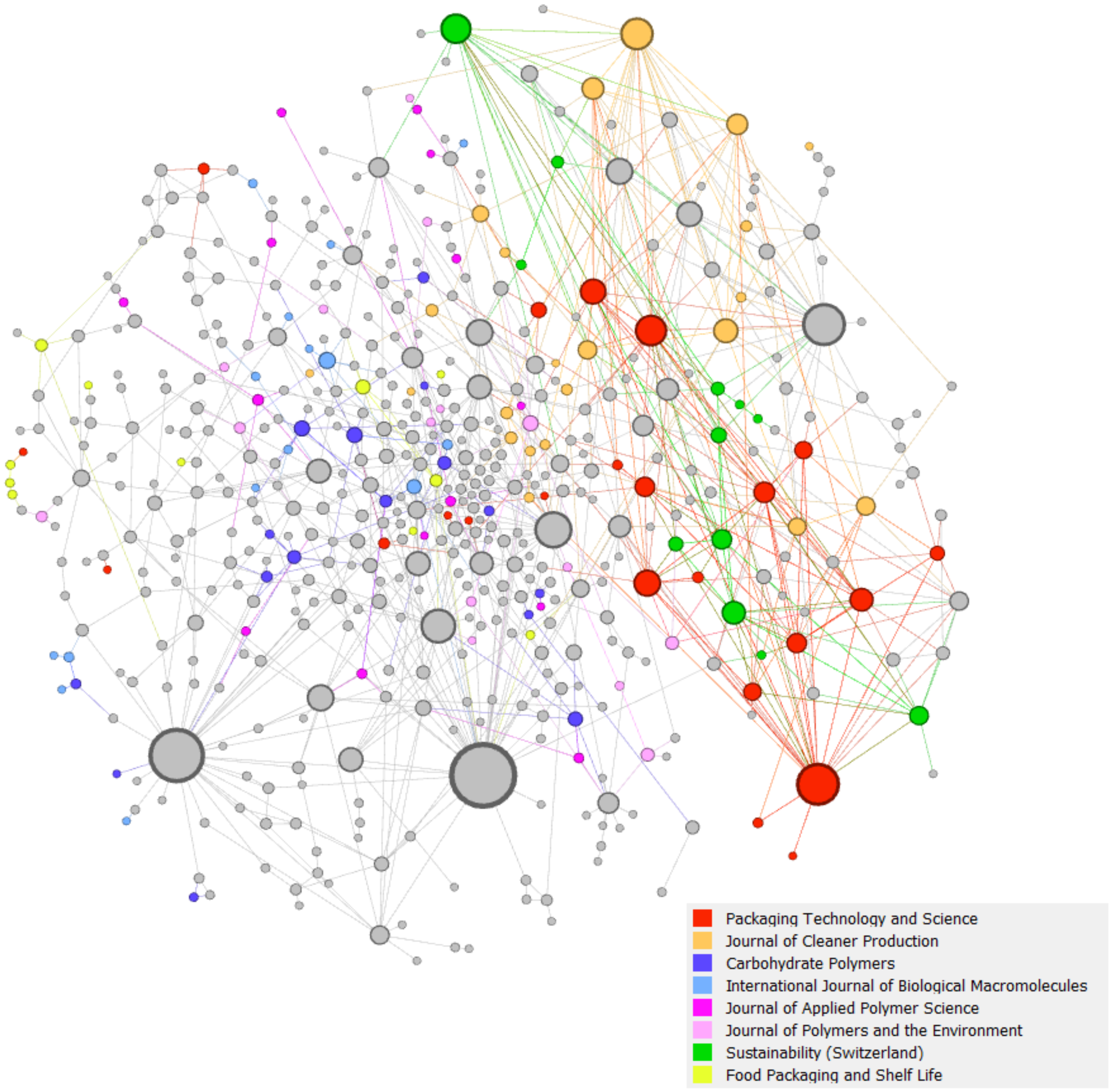
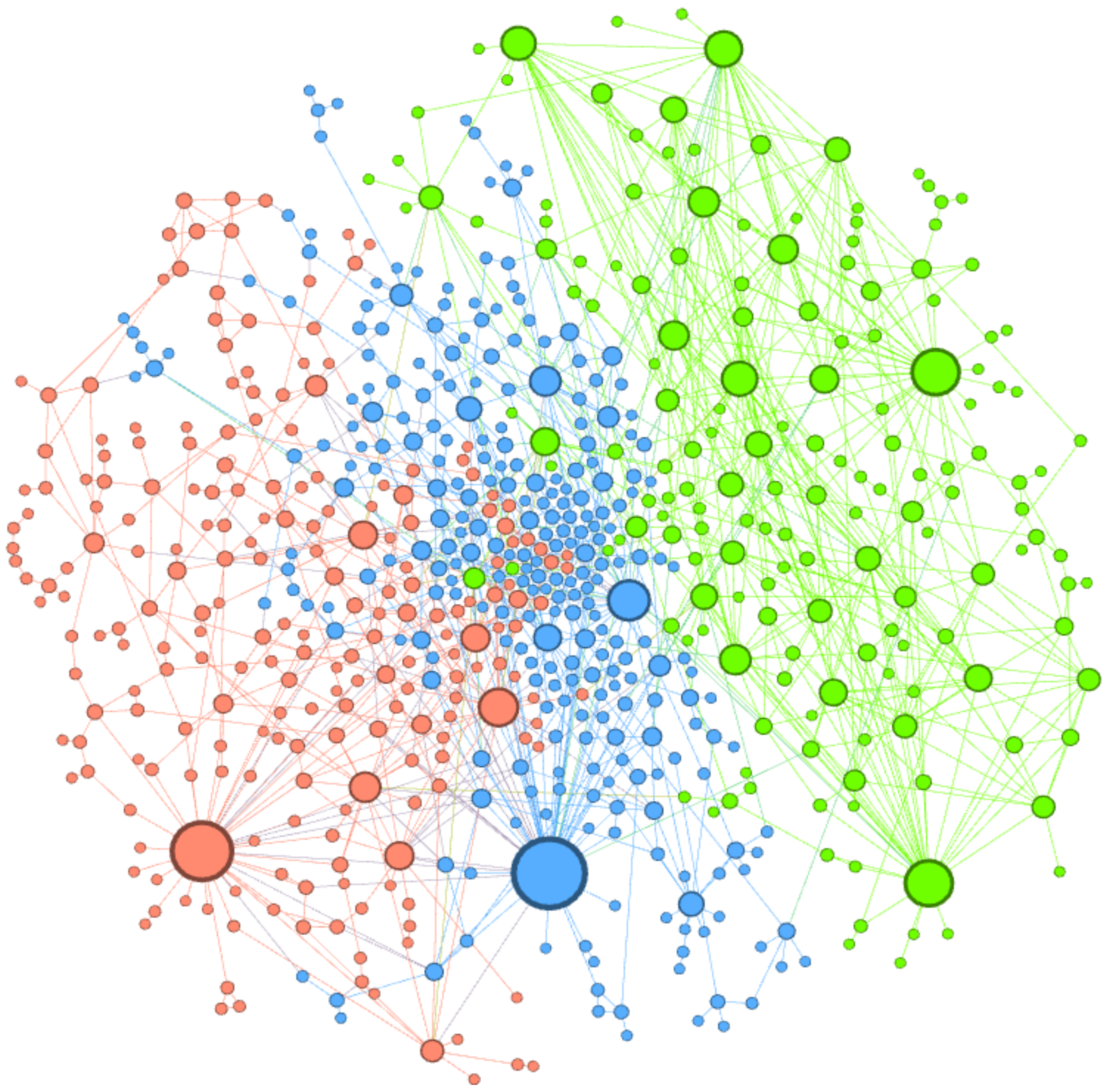
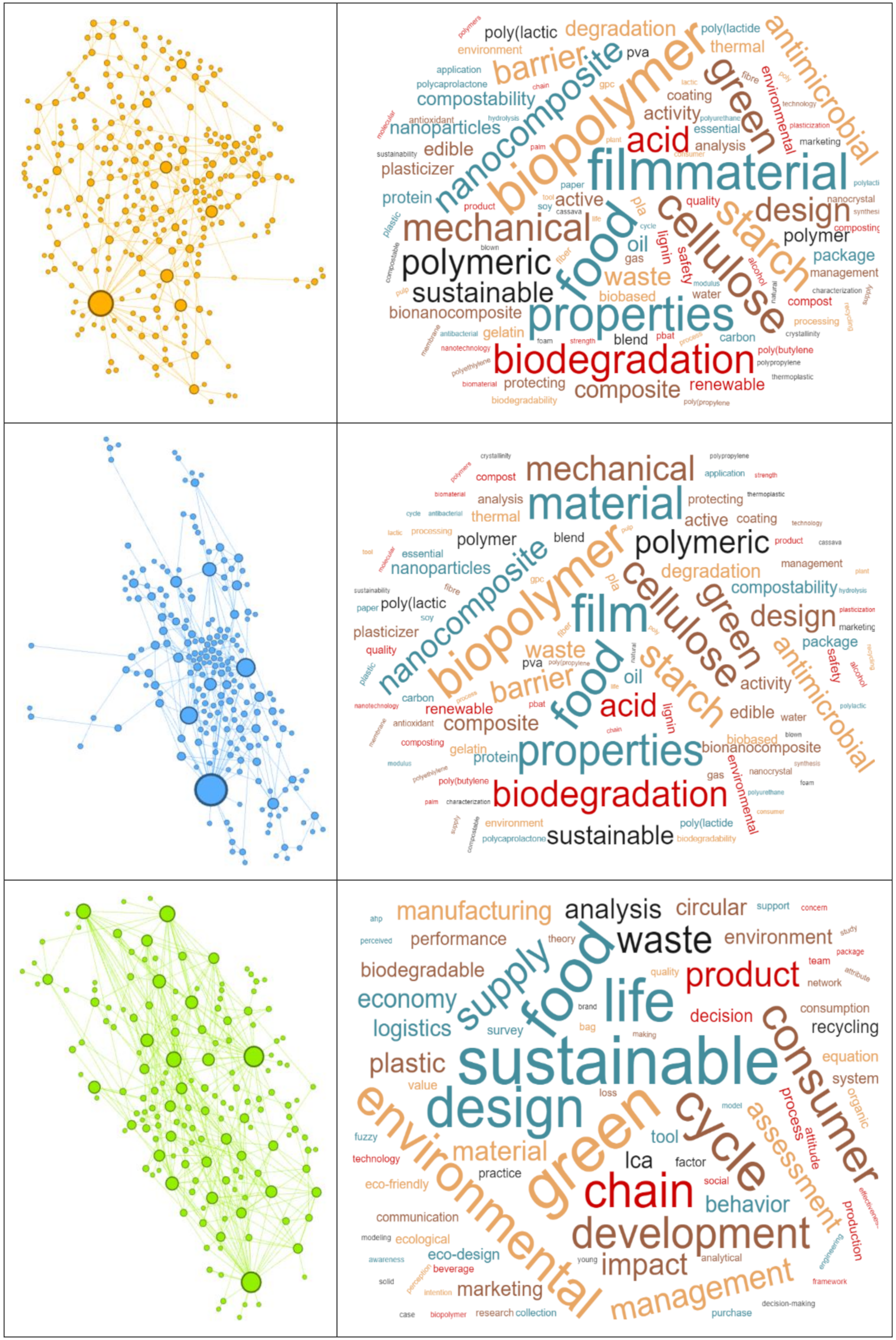
Publisher’s Note: MDPI stays neutral with regard to jurisdictional claims in published maps and institutional affiliations. |
© 2021 by the authors. Licensee MDPI, Basel, Switzerland. This article is an open access article distributed under the terms and conditions of the Creative Commons Attribution (CC BY) license (http://creativecommons.org/licenses/by/4.0/).
Share and Cite
Wandosell, G.; Parra-Meroño, M.C.; Alcayde, A.; Baños, R. Green Packaging from Consumer and Business Perspectives. Sustainability 2021, 13, 1356. https://doi.org/10.3390/su13031356
Wandosell G, Parra-Meroño MC, Alcayde A, Baños R. Green Packaging from Consumer and Business Perspectives. Sustainability. 2021; 13(3):1356. https://doi.org/10.3390/su13031356
Chicago/Turabian StyleWandosell, Gonzalo, María C. Parra-Meroño, Alfredo Alcayde, and Raúl Baños. 2021. "Green Packaging from Consumer and Business Perspectives" Sustainability 13, no. 3: 1356. https://doi.org/10.3390/su13031356
APA StyleWandosell, G., Parra-Meroño, M. C., Alcayde, A., & Baños, R. (2021). Green Packaging from Consumer and Business Perspectives. Sustainability, 13(3), 1356. https://doi.org/10.3390/su13031356





